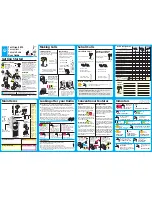
Configuring the internal baseband source
R&S
®
SMM100A
89
User Manual 1179.1341.02 ─ 05
instrument's hard disk. The filename is user-defined; the file extension is
*.dm_iqd
.
The maximum length of a data list is determined by the size of the data list memory
(see data sheet). There is no restriction on the number of lists that can be saved.
Settings for file handling, like transferring external data lists to the instrument, or
renaming of folders and files, are accessed via the standard "File Manger" function.
(See also
Chapter 10, "File and data management"
●
Data patterns
Simple data patterns such as binary 0 ("All 0") strings or 1 ("All 1") strings or vari-
able bit strings with a maximum length of 64 bits can be used as internal modula-
tion data.
●
PRBS data
The PRBS generators deliver pseudo-random binary sequences of differing length
and duration. They are known as maximum length sequences. PRBS sequences
are generated with the aid of ring shift registers with feedback points determined by
the polynomial.
The pseudo-random sequence from a PRBS generator is uniquely defined by the
register number and the feedback. The
generators.
For PRBS15 and PRBS23, a CCITT V.52-compliant data inversion is performed in
the feedback path automatically.
Table 4-1: Overview of PRBS generators
PRBS generator
Length in bits
Feedback to
GUI selection
9-bit
2
9
-1 = 511
Registers 4, 0
PRBS 9/PN9
11-bit
2
11
-1 = 2047
Registers 2, 0
PRBS 11/PN11
15-bit
2
15
-1 = 32767
Registers 1, 0
PRBS 15/PN15
16-bit
2
16
-1 = 65535
Registers 5, 3, 2, 0
PRBS 16/PN16
20-bit
2
20
-1 = 1048575
Registers 3, 0
PRBS 20/PN20
21-bit
2
21
-1 = 2097151
Registers 2, 0
PRBS 21/PN21
23-bit
2
23
-1 = 8388607
Registers 5, 0
PRBS 23/PN23
Example:
By way of example, the diagram on
shows a 9-bit generator
with feedback to registers 4 and 0 (output). The generated serial data is converted
internally, e.g 2 Bit/Symbol if QPSK is used.
Figure 4-1: A 9-bit PRBS generator
Common functions and settings in the baseband domain
















































